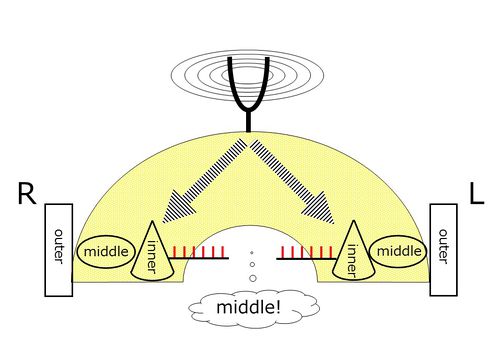Nerve06/eyes and ears/introduction to Weber test
A vibrating tuning fork is placed on the center of the top half of the (donut-shaped) skull. By doing so, the vibration transmitted via the skull (indicated by the arrows) stimulates the (cone-shaped) cochlea of each inner ear. The inner ears generate action potentials (red marks), on the vestibulocochlear (VIIIth cranial) nerves. When these reach the cerebral cortex, auditory sensation is elicited.
In normal subjects, with no significant difference in the sensitivity of both inner ears, the amount of action potentials reaching the brain from both nerves is about the same. Thus, the sound does not shift right, nor left, and would be heard in the middle.
Challenge Quiz
In the Weber test, if the subject says that the sound shifted to the left side, this finding is normal abnormal .
